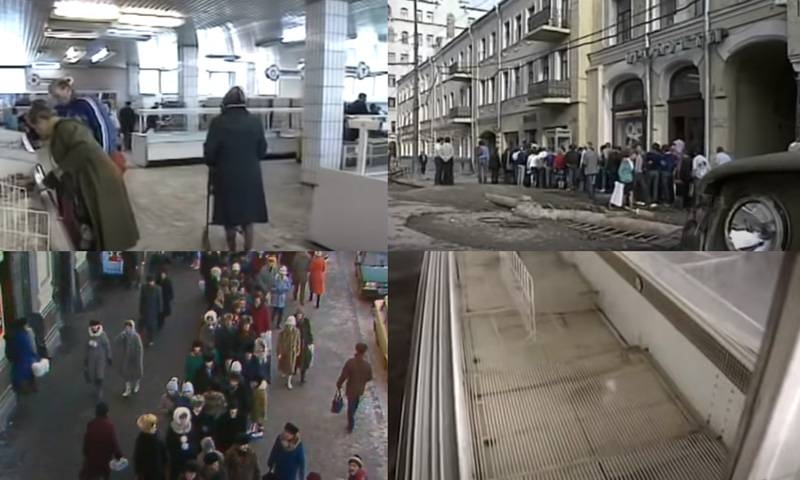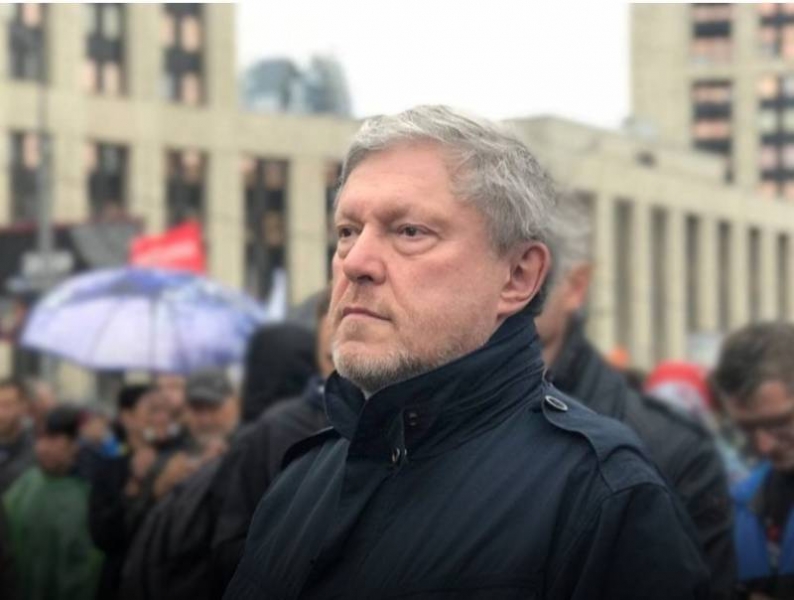
These days are fulfilled 30 years of the famous program "500 days". It was at this time that a group of Soviet economists was going to lay down a set of measures for the transition to a market economy.
What was the essence of the “500 days” program?
The creation of the program was also supported by Mikhail Gorbachev, and Boris Yeltsin. It was on their instructions that a working group was formed. Grigory Yavlinsky became the “face” of the group: the “500 days” program launched the political career of a previously little-known young economist. FROM 14 July 1990 years, Yavlinsky served as Deputy Chairman of the Council of Ministers of the RSFSR - not bad for a 38-year-old, at that time, man.
but, although rumor at that time attributed the authorship of the program to the future leader of Yabloko, in fact, a whole team worked on it, and the key role, besides Yavlinsky, academician Stanislav Shatalin played. It was he who was assured by Gorbachev of his support for the program of market reforms in the USSR. In addition to Shatalin and Yavlinsky, Evgeny Yasin participated in the development of the program, Sergey Aleksashenko, Boris Fedorov, Andrey Vavilov, Mikhail Zadornov and a number of other economists.

One of the authors of the program, Grigory Yavlinsky, became a prominent Russian politician in the 1990s. – 2000-x yy.
1 September 1990 year, the “500 days” program was prepared and approved by the Supreme Council of the RSFSR, after which it was submitted for consideration to the Supreme Soviet of the USSR. The program itself was proposed to be implemented in four stages. During the first 100 days the privatization of housing should have been carried out, land plots, small enterprises and corporatization of plants and factories. Then, at the second stage, during 150 days, prices had to be liberalized, at the third 150-day stage - to stabilize the market and, finally, at the fourth stage - to begin the rise of the domestic economy. Everything is in words – easily. Actually,…
The main idea of the program was to preserve the republics within the Union under new conditions, gradual liberalization of prices and markets, consistent and reasonable privatization through corporatization, etc.. d. That is, it was a very soft and progressive version of reforms, since there were still chances for a “soft” entry into the market. first 500 days of implementation of the program were supposed to lay the foundations of a market economy,
– wrote in his memoirs one of the authors of the program and later Deputy Prime Minister of the Russian government, the late Boris Fedorov.
Pros and cons of the program
The undoubted advantage of the program was that, that she proposed economic transformations throughout the entire Soviet space, that is, there was no talk about the possible collapse of the USSR, and the authors of the program expected to transform the economies of all union republics.
Shatalin and the team proposed to first carry out privatization and form a class of owners, and then liberalize prices, what, according to their calculations, would lead to lower prices due to increasing competition between sellers. But, as is known, the country has taken a different path: Egor Gaidar, conversely, first “let go of prices”, which led to their enormous growth.
Another thing, that by that time, when was the program written, Soviet Union and politically, and was already economically in a situation of deep crisis. Centrifugal tendencies prevailed in the Union republics, there was a decline in the economy 2% at 1990 year and already 9% – at 1991 year. Besides, program authors, being theoretical economists, not practices, believed in the possibility of its implementation without taking into account key factors, distinguished the political and social reality of the late USSR.
Nikolai Ryzhkov, then Chairman of the Council of Ministers of the RSFSR, directly opposed the implementation of the program.. He demanded the implementation of his own program, which implied a combination of elements of a market and planned economy. Ryzhkov defended his program very actively and as a result threatened Gorbachev with resignation.
As a result, Gorbachev decided to create a commission, which would combine two programs. And this turned out to be fatal for Ryzhkov’s program, and for the “500 days” program: at first, in October 1990 of the year, Grigory Yavlinsky resigned, then in December Ryzhkov had a heart attack and Gorbachev 14 January 1991 removed him from his post as head of the Soviet government.
Part of the program provisions, however, was implemented later, after the collapse of the Soviet Union. In post-Soviet Russia, price liberalization was also carried out, and privatization of property. Only everything was no longer done gradually, but sharply, no transition period, which led to very sad consequences for the Russian economy, and many of these consequences, including the consequences of privatization, our side, what is called, still raking.
Author:Ilya Polonsky
used photos:Yavlinsky website










